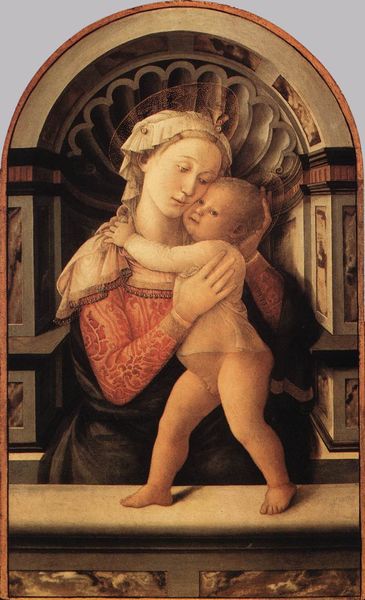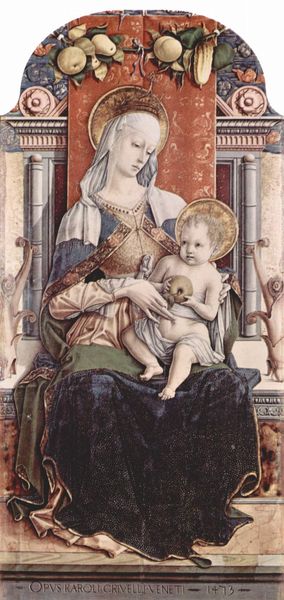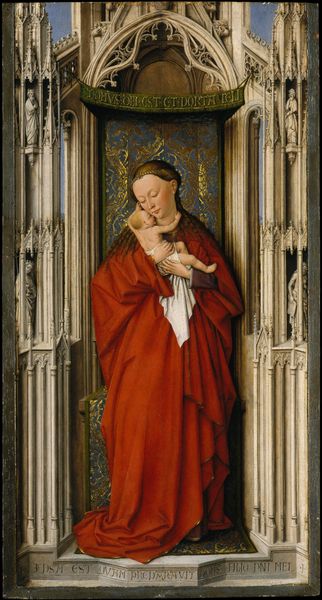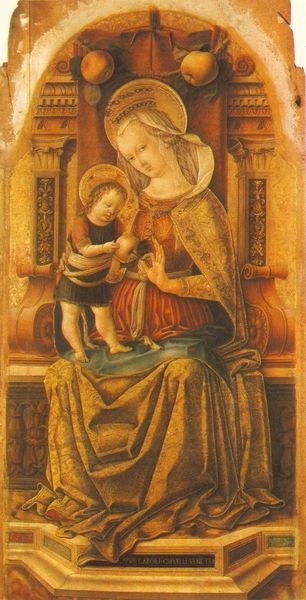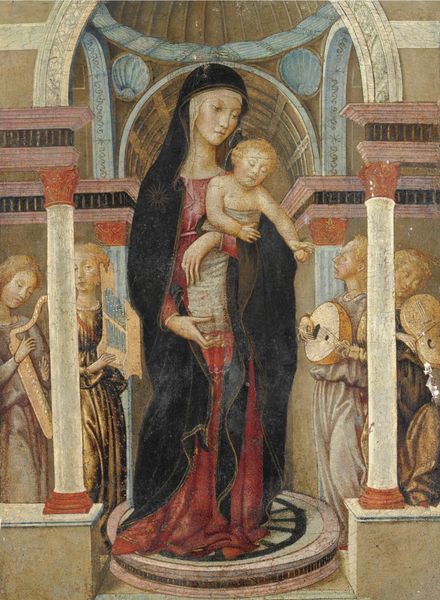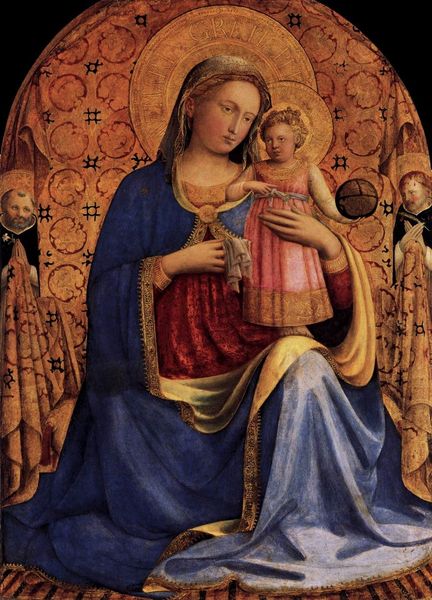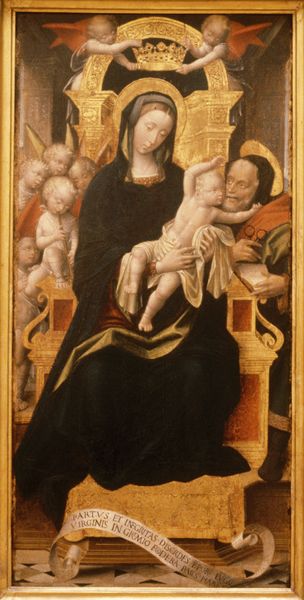
St. Ursula Shrine: Virgin and Child 1489
0:00
0:00
hansmemling
Memling Museum (Old St. John's Hospital), Bruges, Belgium
painting, oil-paint
#
portrait
#
painting
#
oil-paint
#
sculpture
#
oil painting
#
history-painting
#
italian-renaissance
#
early-renaissance
#
portrait art
Copyright: Public domain
Editor: This is Hans Memling's "St. Ursula Shrine: Virgin and Child" created around 1489. It is currently housed in the Memling Museum in Bruges. I’m immediately struck by the symmetrical arrangement and the subdued but warm palette. What do you notice in this piece from a formal perspective? Curator: Well, the emphasis on the verticality of the composition, accentuated by the architectural frame, guides the eye upward. Note how Memling contrasts the smooth, almost porcelain-like finish of the figures' skin with the intricate detailing of the gold frame. It is a dynamic visual counterpoint that adds considerable interest. Editor: Yes, the textural contrast is really remarkable. Also, it seems like the figures almost appear as a sculpture set against the gothic arches that give it this feeling. Do you think the limited colour scheme enhances the sculpture illusion? Curator: Precisely. And what about the deployment of light and shadow? Do you observe any patterns or strategies being employed? Editor: Now that you mention it, the light seems focused on the central figures of the Virgin and Child, almost like they are emerging from the shadowy corners. It directs our gaze to the primary subject of devotion, but there isn’t a dramatic tenebrism as we might find in later paintings. Curator: Precisely. Consider how that calculated distribution of light contributes to the painting’s overall mood. This careful construction using light, texture, and symmetry invites the viewer into a meditative state, doesn't it? Editor: It definitely does. I see how analysing these formal elements really enhances the viewing experience. Thanks for highlighting all this. Curator: My pleasure, examining composition in these pieces is vital. It is an enlightening process to witness how these pieces operate.
Comments
No comments
Be the first to comment and join the conversation on the ultimate creative platform.


